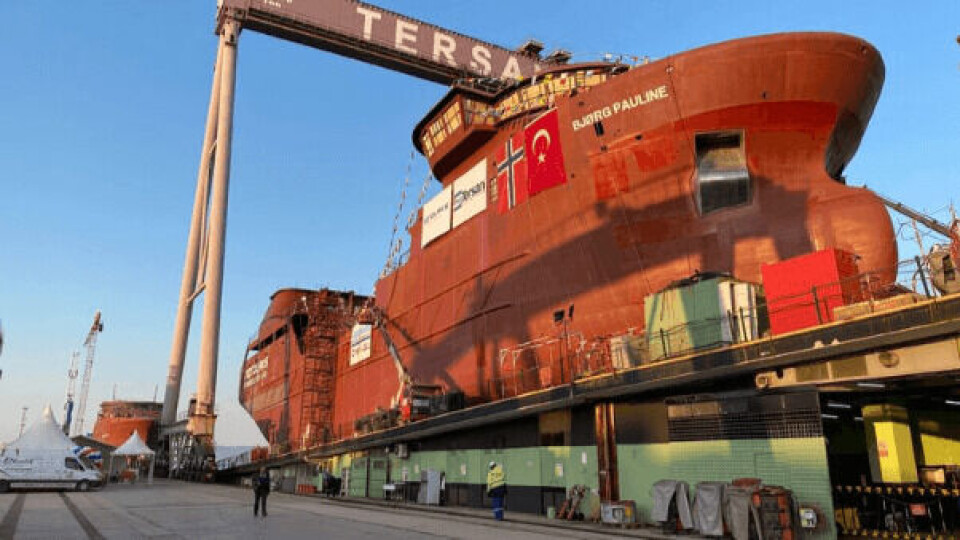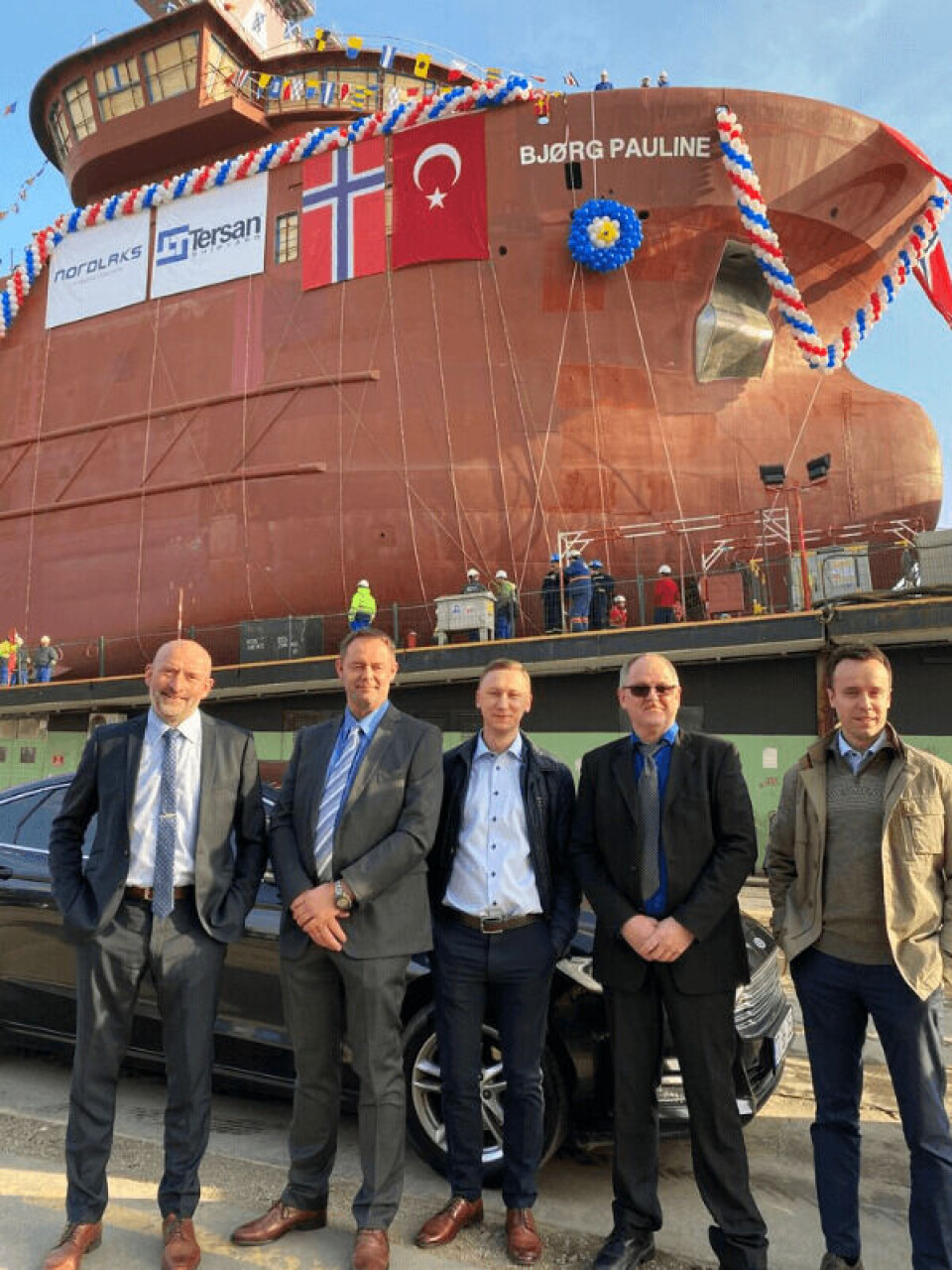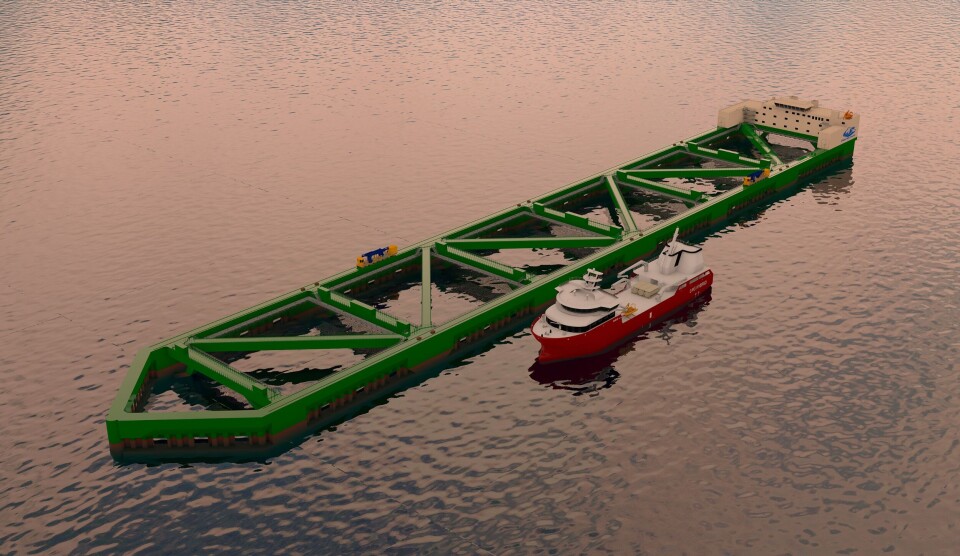
World’s first gas-hybrid wellboat launched
The world’s first gas-hybrid wellboat has been launched at a shipyard in Turkey.
The Bjørg Pauline, which still requires several months of fitting out, is one of two gas-hybrids ordered by Norwegian salmon farmer Nordlaks, the company that’s also behind the ship-shaped Havfarm concept.
The hybrid wellboats are designed by NSK Ship Design in Harstad, Norway and are being built at Tersan shipyard in Turkey. The Bjørg Pauline will be the very first wellboat with liquid natural gas (LNG) / battery hybrid propulsion.

30% fuel cost saving
Together with shore power connectivity, this technology will reduce total greenhouse gas emissions by more than 20% and nitrogen oxide (NOx) emissions by 90%, compared with today’s wellboats.
“By choosing LNG, batteries and shore power connection over ordinary ship fuel, Nordlaks saves both the environment and fuel costs,” said Thomas Myhre, head of NSK Ship Design.
“Nordlaks is the foremost in the industry to adopt new technology. LNG is more energy-dense and because of the charging system less expensive than diesel, and we expect fuel costs to be cut by 30% compared to today’s wellboats.”
600-tonne capacity
The Bjørg Pauline is 84 metres long, 19 metres wide and will have the capacity to carry over 600 tonnes of live fish. The vessel will mainly transport live salmon and rainbow trout from Nordlaks’ land-based smolt pants to marine farms and on to the harvest facility on Børøya in Hadsel.
The Bjørg Pauline will be delivered in summer 2020, with the second vessel due for delivery in 2021.

Efficient operation
Both wellboats will be equipped with Dynamic Positioning (DP) and are adapted to operate at exposed locations and to serve Nordlaks’ upcoming Havfarm.
“The new wellboats are important for Nordlaks and for the production method that we set up in the Havfarms,” said company founder Inge Berg.
“These will be two fantastic vessels with forward-looking technology and have the necessary capacity that Nordlaks needs for safe and efficient operation.”
Havfarm due in spring
Nordlaks produces 40,000 tonnes of salmon and trout at 39 sites in Nordland and Troms in northern Norway.
The first of two Havfarms is under construction in China, and at the end of 2019, three “mega blocks” will be welded together in a dock in Yantai. It is due for delivery next spring, with the first fish going into its cages in the summer.
The first Havfarm will be 385 metres long and 59.5 metres wide. The anchorage is in the bow-section, where there will be a group of anchors in a circular formation. It is classed by Nordlaks as “stationary”, although it will be able to rotate around its anchor point.
The second Havfarm is now in a design phase. Havfarm 2 is dynamic, which means that the facility can be moved between locations. The second Havfarm will have a length of 304 metres and a width of 63 metres.






















































